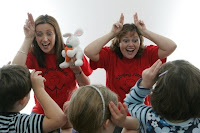 Parents beware: Your toddler is at risk around the Christmas tree this season. Although rare, holiday hazards can occur. In Boston alone, five children per year end up in emergency rooms due to injuries ranging from eating broken glass to swallowing batteries.
Parents beware: Your toddler is at risk around the Christmas tree this season. Although rare, holiday hazards can occur. In Boston alone, five children per year end up in emergency rooms due to injuries ranging from eating broken glass to swallowing batteries.
A study done at Children’s Hospital in Boston showed that between 1995-2008, 76 cases of injuries involving holiday decorations, such as ornaments and light bulbs occurred. Half of the injuries happened when a child ate fragments of the decorations–glass, metal or small light bulbs.
Dr. Lois Lee, director of the hospital’s Emergency Injury Prevention Program says, “If there are toddlers in the house, keep them away from the Christmas tree or at least keep the ornaments off the lower branches where the children can reach them.”
A few other things to think about:
- Place tree away from fireplaces, radiators and other heat sources. Heated rooms dry trees out rapidly, creating fire hazards.
- Artificial snow sprays can irritate lungs if inhaled. To avoid injury, read container labels; follow directions carefully.
- Check each set of lights, new or old, for broken or cracked sockets, frayed or bare wires, or loose connections. Discard damaged sets or repair them before using.
- Use no more than three standard-size sets of lights per single extension cord.
- Turn off all lights on trees and other decorations when you go to bed or leave the house. Lights could short and start a fire.*
- Never use electric lights on a metallic tree. The tree can become charged with electricity from faulty lights, and any person touching a branch could be electrocuted! To avoid this danger, use colored spotlights above or beside a tree, never fastened onto it!
- Keep “bubbling” lights away from children. These lights with their bright colors and bubbling movement can tempt curious children to break candle-shaped glass, which can cut, and attempt to drink liquid, which contains a hazardous chemical.
For more tips on preventing accidents this holiday, please visit The U.S. Consumer product Safety Commission’s website.
*Watch the video below to see how fast a Christmas tree can ignite and end the party.











